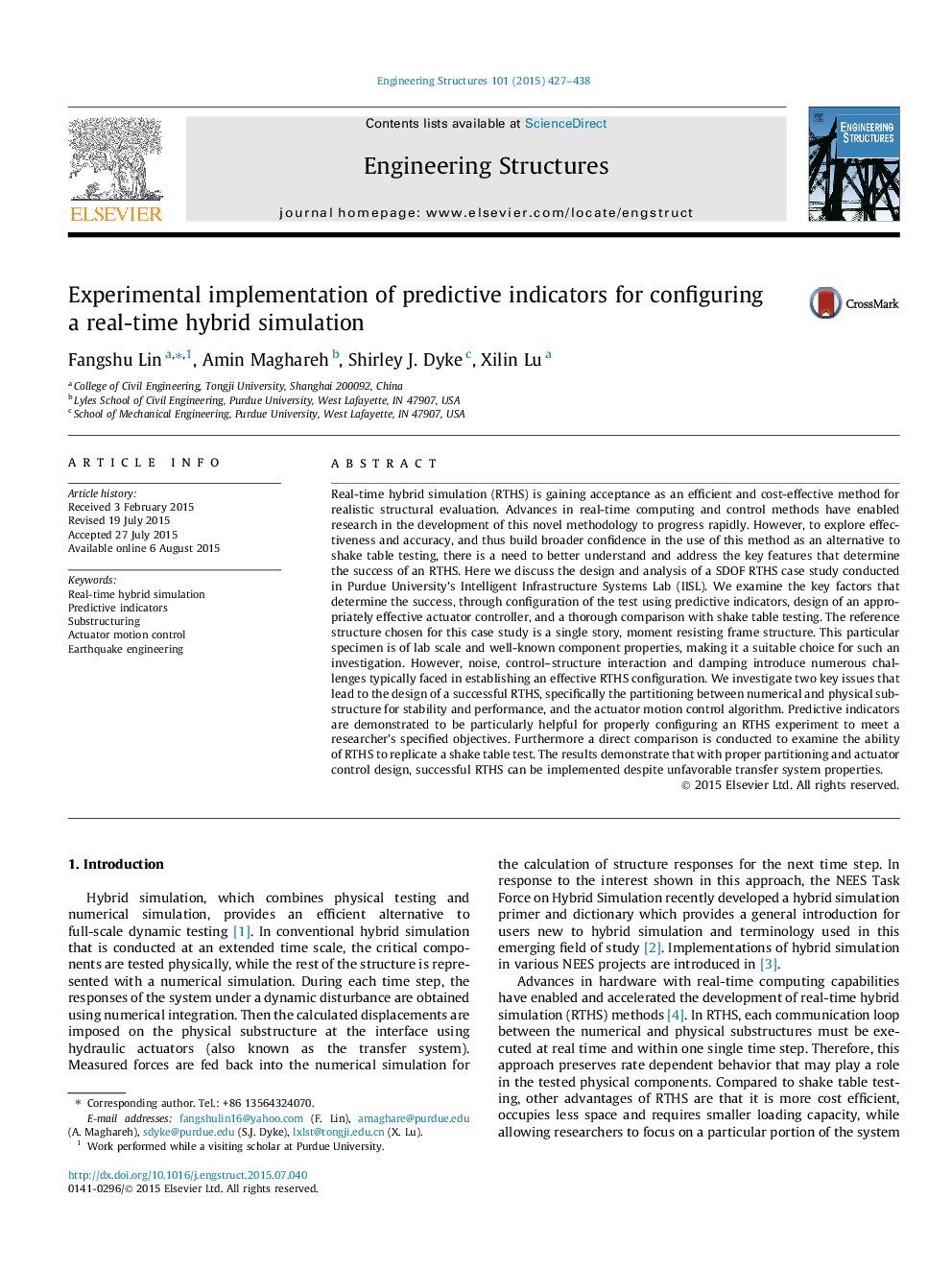| Article ID | Journal | Published Year | Pages | File Type |
|---|---|---|---|---|
| 266054 | Engineering Structures | 2015 | 12 Pages |
•A cyber-physical real-time hybrid simulation (RTHS) platform is developed.•Two key issues that determine the design of a successful RTHS are discussed.•Predictive indicators are utilized in selecting an effective system partitioning.•The actuator motion controller employed shows stable and adequate performance.•RTHS is conducted for a lightly damped system and compared to shake table test.
Real-time hybrid simulation (RTHS) is gaining acceptance as an efficient and cost-effective method for realistic structural evaluation. Advances in real-time computing and control methods have enabled research in the development of this novel methodology to progress rapidly. However, to explore effectiveness and accuracy, and thus build broader confidence in the use of this method as an alternative to shake table testing, there is a need to better understand and address the key features that determine the success of an RTHS. Here we discuss the design and analysis of a SDOF RTHS case study conducted in Purdue University’s Intelligent Infrastructure Systems Lab (IISL). We examine the key factors that determine the success, through configuration of the test using predictive indicators, design of an appropriately effective actuator controller, and a thorough comparison with shake table testing. The reference structure chosen for this case study is a single story, moment resisting frame structure. This particular specimen is of lab scale and well-known component properties, making it a suitable choice for such an investigation. However, noise, control–structure interaction and damping introduce numerous challenges typically faced in establishing an effective RTHS configuration. We investigate two key issues that lead to the design of a successful RTHS, specifically the partitioning between numerical and physical substructure for stability and performance, and the actuator motion control algorithm. Predictive indicators are demonstrated to be particularly helpful for properly configuring an RTHS experiment to meet a researcher’s specified objectives. Furthermore a direct comparison is conducted to examine the ability of RTHS to replicate a shake table test. The results demonstrate that with proper partitioning and actuator control design, successful RTHS can be implemented despite unfavorable transfer system properties.
